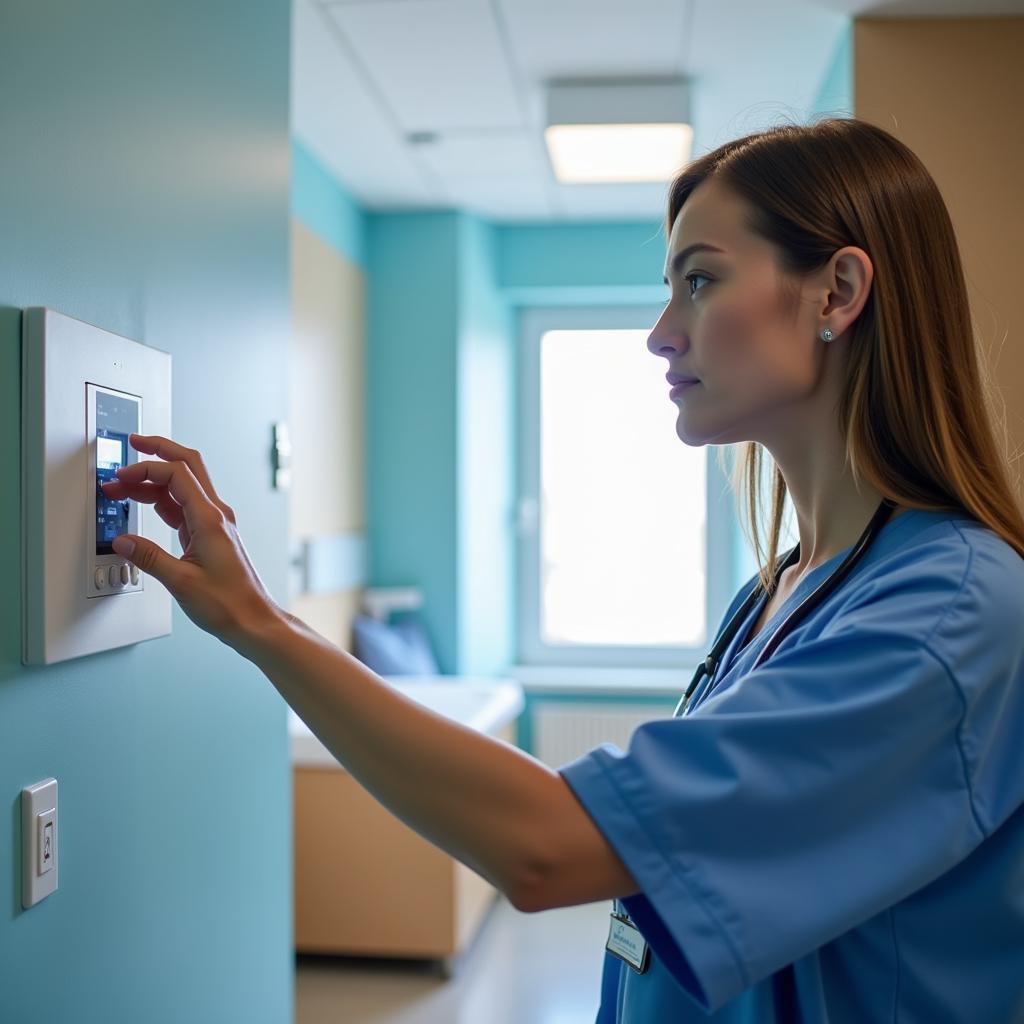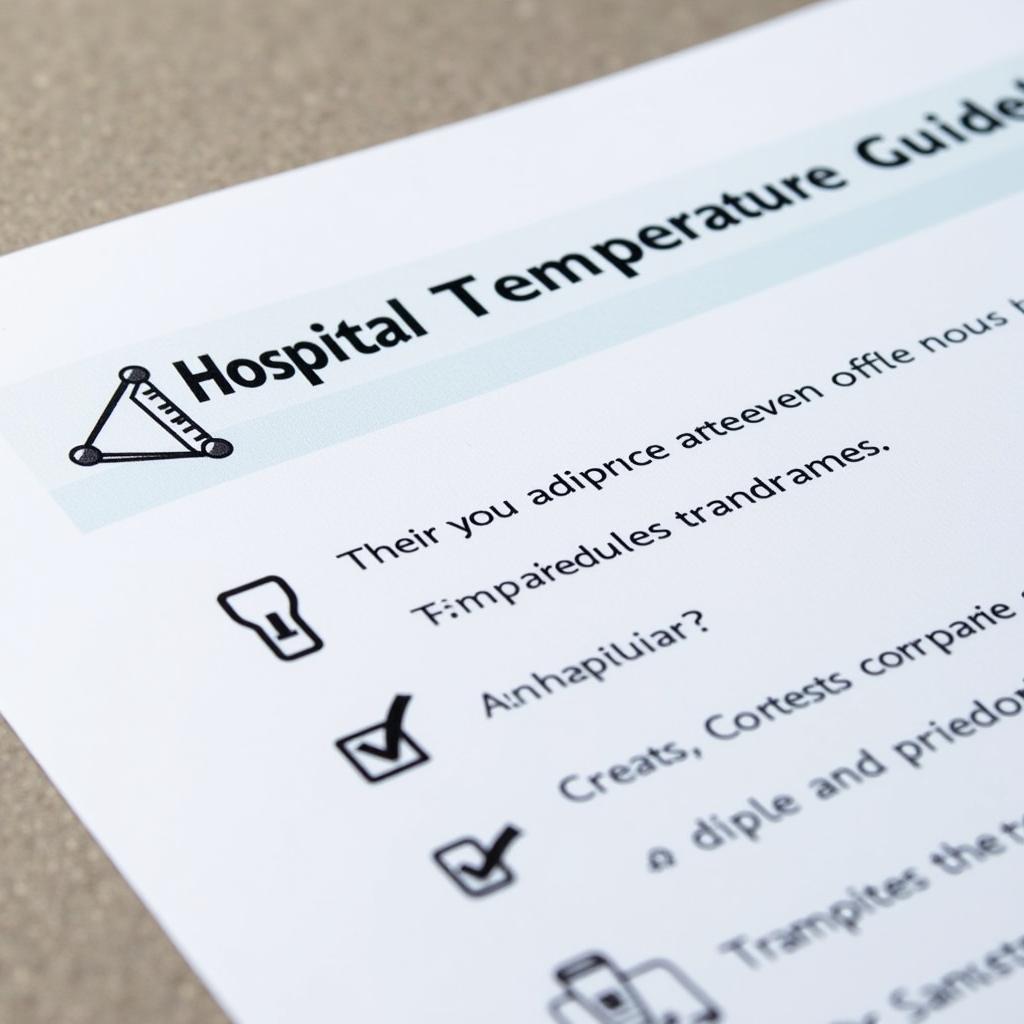Hospital Temperature plays a crucial role in ensuring the well-being of patients, staff, and visitors. It’s not simply about comfort; it’s about creating an environment that supports healing, prevents the spread of infection, and maintains the integrity of medical equipment and supplies.
Factors Influencing Ideal Hospital Temperature
Several factors influence the ideal hospital temperature. Patient needs vary depending on their age, medical condition, and treatment plan. For instance, newborns in the NICU require a warmer environment than adults recovering from surgery.
 Hospital Room Temperature Control
Hospital Room Temperature Control
Additionally, different areas within a hospital have specific temperature requirements. Operating rooms, for example, are kept cooler to minimize bacterial growth and provide a comfortable working environment for surgeons. Laboratories and pharmacies also have strict temperature controls to preserve the integrity of medications and specimens.
The Impact of Hospital Temperature on Patient Outcomes
Studies have shown a direct correlation between hospital temperature and patient outcomes. Maintaining a comfortable temperature can:
- Promote Healing: A conducive temperature supports the body’s natural healing process by reducing stress and promoting restful sleep.
- Reduce Infections: Proper temperature control inhibits the growth of bacteria and viruses, minimizing the risk of hospital-acquired infections.
- Improve Comfort: A comfortable environment reduces patient discomfort and anxiety, leading to a more positive overall experience.
Maintaining Safe and Comfortable Hospital Temperature: Best Practices
Hospitals employ a multi-faceted approach to maintain safe and comfortable temperatures:
- HVAC Systems: Advanced heating, ventilation, and air conditioning systems regulate temperature and airflow throughout the facility.
- Temperature Monitoring: Regular monitoring of temperature in patient rooms, operating rooms, and other critical areas ensures compliance with standards.
- Insulation and Window Treatments: Proper insulation and window treatments help to regulate heat loss and gain, contributing to a more stable indoor temperature.
Hospital Temperature Guidelines and Regulations
Regulatory bodies like the World Health Organization (WHO) and national health organizations provide guidelines for maintaining safe hospital temperatures. These guidelines often specify temperature ranges for different areas within a hospital.
 Hospital Temperature Guidelines
Hospital Temperature Guidelines
FAQs About Hospital Temperature
Why is my hospital room so cold?
Hospitals often maintain a slightly cooler temperature to inhibit bacterial growth and create a more sterile environment. However, if you find your room too cold, don’t hesitate to ask your nurse for an extra blanket.
Can I adjust the temperature in my hospital room?
Some hospitals allow patients to adjust the temperature in their rooms within a certain range. Check with your nurse to see what options are available to you.
What should I wear to the hospital considering the temperature?
It’s a good idea to dress in layers so you can easily adjust to the temperature. Comfortable, loose-fitting clothing is always recommended.
Need More Information?
For more information on hospital essentials, you can find related articles on our website:
Maintaining optimal hospital temperature is a crucial aspect of providing quality healthcare. By prioritizing temperature control, hospitals can create a healing environment that promotes patient well-being and supports positive outcomes.
Need assistance? Contact us:
Phone: 02437655121
Email: [email protected]
Address: Số 298 Đ. Cầu Diễn, Minh Khai, Bắc Từ Liêm, Hà Nội, Việt Nam.
We have a 24/7 customer service team ready to assist you.